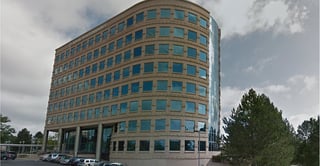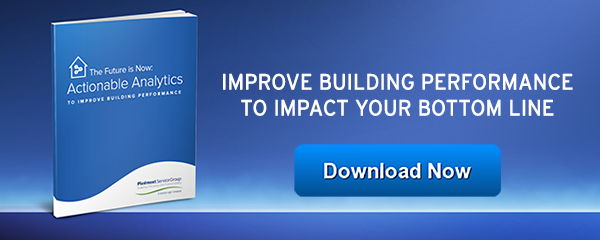Is Your Commercial Building Sick? Improve Your HVAC System to Overcome SBS
 There really is such a thing as Sick Building Syndrome, and it could affect your commercial facility right now.
There really is such a thing as Sick Building Syndrome, and it could affect your commercial facility right now.
Sick Building Syndrome (SBS) is a phenomenon that notably affects commercial building occupants, and has for decades. It generally refers to occupants experiencing acute negative health symptoms that seem to be directly connected with time spent in a particular building or area within the building.
A 1994 report by the World Health Organization identified the wide spectrum of symptoms using broad categories, including: “mucous membrane irritation (eye, nose, and throat irritation), neurotoxic effects (headaches, fatigue, and irritability), asthma and asthma-like symptoms (chest tightness and wheezing), skin dryness and irritation, gastrointestinal complaints and more.”
What causes SBS?
There is controversy surrounding SBS, especially regarding how much of reported incidents and symptoms are psychologically based or the product of suggestion rather than actual physical causes.
However, most experts agree that at least a portion of the reported symptoms are legitimately caused by chemical agents and other contaminants inside the commercial building environment. These can include:
- Molds
- Fungi
- Bacteria
- Viruses
- Chemical contaminants (from poorly used or stored cleaning supplies, for example)
- Ozone (a byproduct of some office equipment)
- Particulates in the air (such as those caused by outgassing of certain building materials)
- Infectious diseases
The key element that seems to tie all these potential causes together and makes them a chronic health problem in some buildings is inadequacies in the HVAC system, especially from a ventilation and air circulation standpoint.
When a commercial HVAC system isn’t effectively circulating the air in every section of a building – and exchanging it as needed with fresh outside air – the indoor environment can quickly deteriorate, filling with natural and synthetic contaminants.
Similarly, if the system isn’t adequately dehumidifying or maintaining the appropriate temperature, the air inside can become a perfect breeding ground for biological contaminants – from smelly mold and the common cold to serious infectious diseases.
What are the end results if your building really is sick?
With the exception of advanced mold outbreaks - which usually take time to develop and are symptomatic of serious structural flaws - the issues described above aren’t going to do directly damage to your building or your HVAC system. At least, not immediately.
However, if the system runs poorly or fails to accomplish its purpose, it likely means that there are parts that are in need of cleaning, repair, or replacement. It may be filters, fans, or air intake vents. Or, it may be more systemic in nature: a malfunctioning chiller or air exchanger. Over time, these malfunctioning parts can place undue strain on the rest of the system and cause other failures in a snowball effect.
At the very least, a system with problems is likely running inefficiently and wasting money on energy.
And don’t discount the cumulative effect of discomfort and illness among the occupants of the building. From lower productivity and a higher rate of sick time to lower morale and even a rise in turnover, a sick building can end up costing the business(es) running inside it a tremendous amount of money over the long term.
What can you do about SBS if it’s affecting your building?
Identifying the cause of the problem and effectively resolving it can be tricky. But a professional, experienced HVAC technician has the know-how and tools necessary to do just that, quickly, accurately, and effectively.
If tenants or building occupants in your facility are complaining routinely about physical symptoms that could be caused by an air quality issue, contact Piedmont Services Group today to have your system inspected and get the problem fixed.

